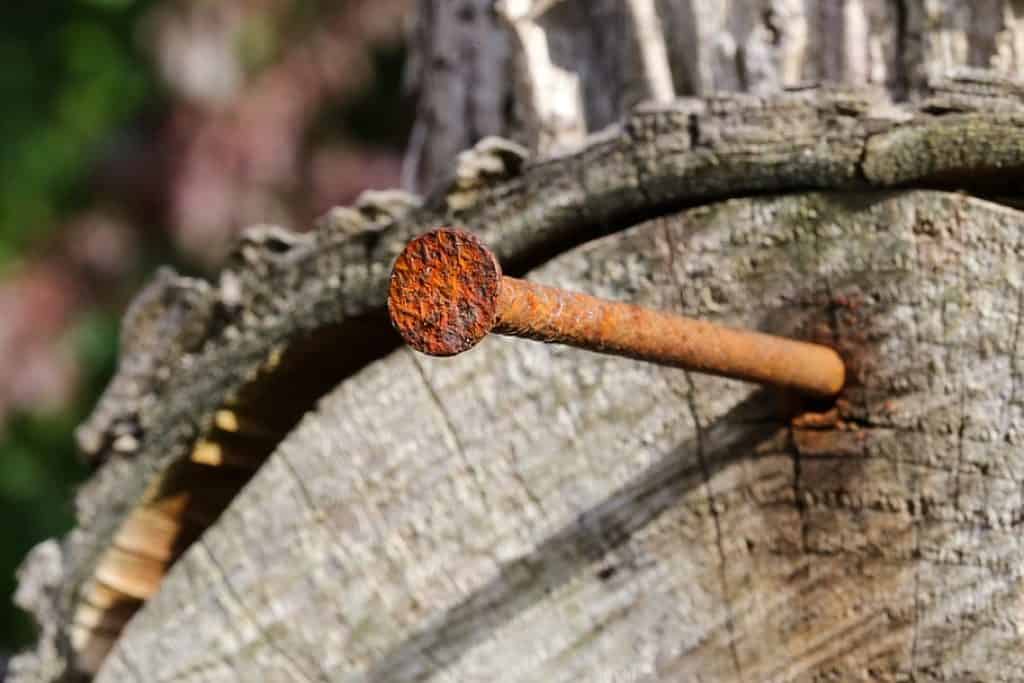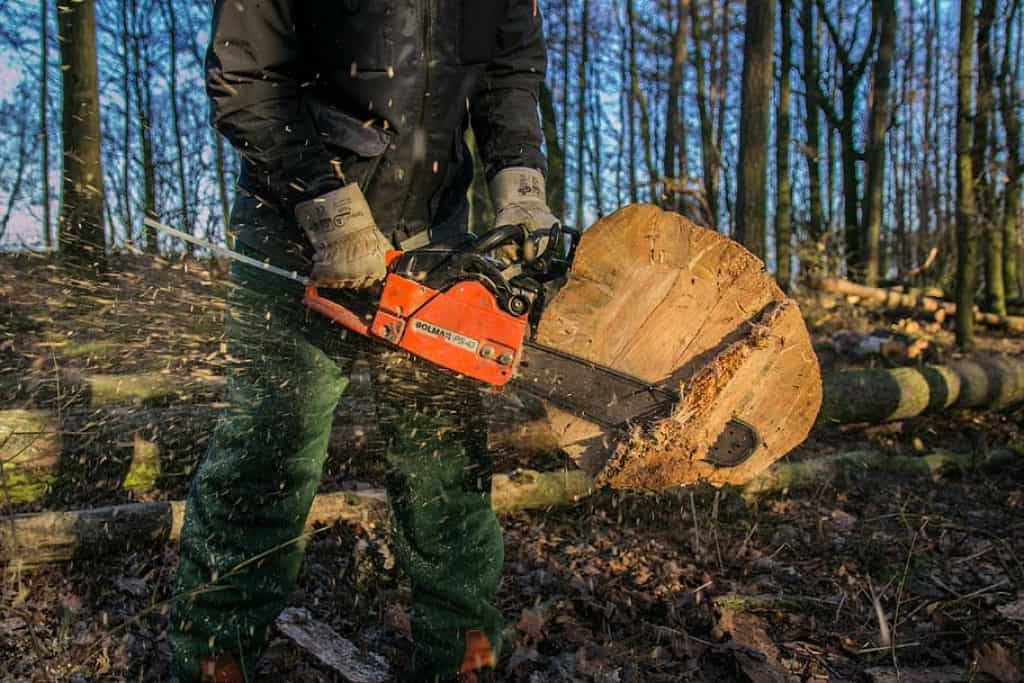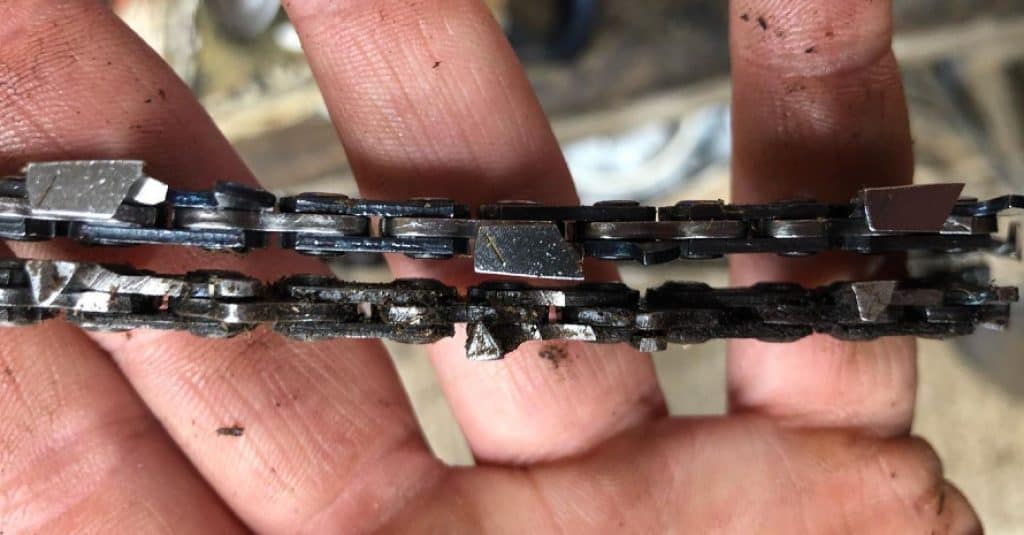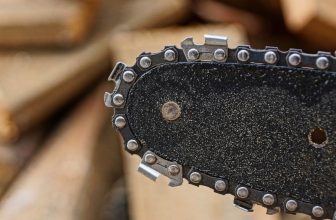When to Replace Chainsaw Chain
Chainsaw maintenance is vital in ensuring your home remodeling activities remain less tiring. Sharpening the tool, oiling, and ideal storage will highly increase your tool’s life. However, there comes a time when the chain is worn out, and these upkeep activities become less efficient.
Fortunately, I have over 10 years of experience in home improvement, woodworking, and remodeling. I have prepared chainsaw chain replacement tips to ensure you do not end up purchasing a new chainsaw when it’s only a few parts that require upgrading.
Contents
How Long Does a Chainsaw Chain Last
Chainsaw durability differs from one item to another, although all the tools become dull over time. However, most top-quality chains can last up to 5 years of extensive use, or up to a decade when used occasionally. Additionally, these tools durability is highly dependent on maintenance.
Factors That Can Accelerate Your Need to Replace Chainsaw Chain
Well, below are four factors that can easily damage your chain. Avoid them at all costs if you want a long-lasting and ideally serving chain. That said, ensure you follow the chainsaw safety rules to the letter to avoid unnecessary injuries.
Hitting Rocks
This occurs as a result of cutting near the ground, as the cutters can easily dip into rocks or dirt. Remember that dirt dulls the cutters in seconds, which highly affects the tool’s ease of use.
Hitting a Nail
In most cases, trees around the home area are used for fencing purposes. This means that there is a likelihood of finding embedded metallic objects, such as nails, on the tree you are cutting. You, therefore, need to be careful as you clear these logs off your compound since they can damage your chainsaw easily.
Inappropriate Lubrication
Lubrication offers a solution to overheating problems in your saw and ensures the tool runs smoothly. Your choice of lubricants is, therefore, highly crucial in chainsaw maintenance.
Rust
This is often as a result of improper chain cleaning and oiling. Besides that, improper storage can easily accelerate the rate at which your chain rusts and harm its durability. It is, therefore, highly advised to store the tool inside where it isn’t exposed to extreme weather.
How to Tell When a Chainsaw Chain Is Worn Out
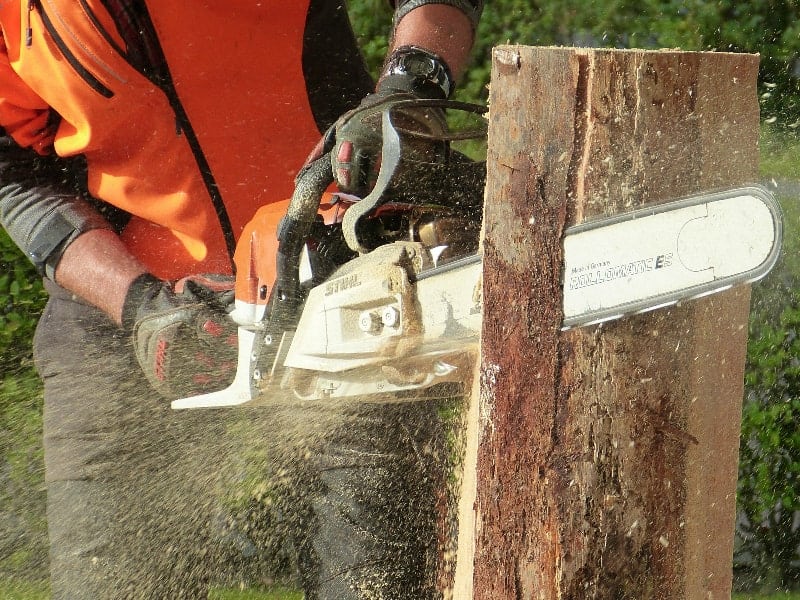
A chainsaw chain doesn’t have an expiration date, but there are several features to consider before you decide to replace it. Fortunately, the section below covers tips that denote a dull blade, and they can also be used to tell if it’s the time is right for you to change chainsaw chain. So, let’s get started and ensure you get your versatile tool back to its new-like state.
Look for Dents on the Chain
Hitting rocks or nails can leave your chain dented. Depending on the impact these objects had on the item, sharpening might not work ideally for you, and this brings about the need to replace it. However, sharpening your tool with a chainsaw sharpener can be an ideal solution to minor dents.
Check if the Chain Is Rusty
Failure to store your chainsaw well will result in rusting. Unfortunately, there is nothing much for a rusty chain other than replacing it. It is, therefore, vital to use oil and clean your chain after use.
Poor Cutting Performance
The main impact of a dull chainsaw blade is poor performance. Frequent sharpening is highly advisable to keep the chain performance at the required level, but a worn-out chain doesn’t become much effective even after sharpening.
Check if You Have Exceeded the Safety Lines on Your Chain
These are indicators of how far the chain can be polished. Exceeding these points puts you at risk as the chain can easily fall apart, especially when you are using it. This is highly dangerous, and you need to consider replacing your chainsaw chain immediately.
1. Uneven Cuts
Although these can be easily solved through sharpening, at times, it is highly recommended for you to consider replacing the chain. With a new or sharper chain, you are assured of smooth and precise cuts.
2. Smoking
The presence of smoke as you use a chainsaw is a clear indication of dull chain teeth. The tool is made to handle tough jobs, and therefore, no friction should damage it. However, when the teeth are dull, the saw encounters too much friction, which leads to it heating up.
But before you change or sharpen your chainsaw teeth, check if the other components of the tool are working ideally and if the tension is adjusted to perfection. If you still notice smoke, replace your blade as this would cause multiple damages.
FAQs – Replacing Chainsaw Chain
Under this section, you will get answers to some of the most frequently asked queries about chainsaw replacement. You will also learn what to avoid in order to keep your chain sharp for long.
How often to sharpen chainsaw?
A chainsaw requires sharpening when you feel it is getting dull. However, it is advisable to sharpen your chain after at least 5 hours of use. That way, you won’t have to suffer from poor cutting performances.
How many times can you sharpen a chainsaw chain?
Even the robust saws will easily wear out as a result of cutting wood, and regular sharpening is necessary to keep the tool efficient and less tiring. Even though there isn’t a set number, it’s recommended to sharpen your chain at least 5 times before replacement.
However, the times you can sharpen a chainsaw largely depends on your frequency of use. Additionally, if your tool is easily hitting the ground or dirt as you cut, this will accelerate the rate at which it becomes dull.
Why does my chainsaw chain dull so quickly
A dull chain can be tiring to use, but fortunately, you don’t have to sweat over the same as you can easily solve the problem. Below are the reasons that will make your chainsaw chain get dull fast. Avoiding them will see your saw remain sharp for long.
- Cutting dirty wood or touching the ground with the blade’s tip;
- Putting a steep angle on the cutters;
- Rakers being too far down;
- Using inappropriate file size when sharpening.
When to replace chainsaw bar?
Replacing your chainsaw bar is highly recommended, as it is the best way for protection against injuries. Additionally, this protects your chain from premature wearing. Ensure you replace the chain and bar altogether.
Final Thoughts
Chainsaw chain and bar replacement are highly recommended, as worn-out tools can be dangerous. Additionally, these tools will be less effective, and their cutting performances will highly reduce.
However, keeping your chain sharp and well lubricated will help increase your tool’s lifespan. The main factor to avoid when using chainsaws is rust and hitting metallic or dirty objects.
Conclusively, ensure you go through “how to tell if your chain is worn out” before making replacements. That said, do you have any questions regarding the process of chainsaw chain or bar replacement?
“A good tool stays with you for many years and choosing carefully ensures the job is done right, your work is neat, and the tool is always a pleasure to use”
